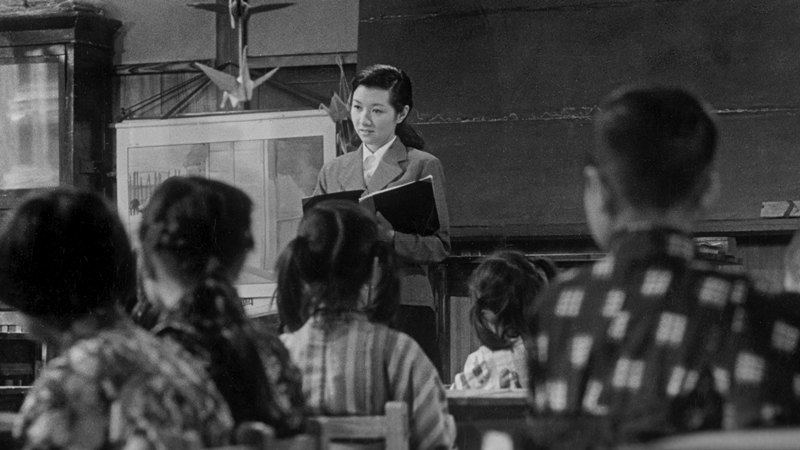“Mankind: The Story of All of Us” is an ambitious 3-disc, 12-part series aired on the History Channel. Anyone familiar with that channel can safely guess at the filmmaking techniques employed here: spiffy computer graphics, earnest commentary, graphic historical recreations, and a breathless pace that rarely gets bogged down in things like detail or scholarship. Please remain seated until the documentary comes to a complete stop.
Narrated by Josh Brolin and following a standard chronological format, the series is broken into twelve one-hour episodes, each one focusing, with some sidebars, on a prominent aspect of humanity’s development (inventions, empires, exploration, etc.). This format allows a certain welcome degree of latitude in the content and chronology of each episode. It also allows for lots and lots and lots of combat recreations, people jabbing each other with pointed sticks in all kinds of locales and time periods.
Spoiler Alert! It turns out the Renaissance was a game-changer, the Chinese have been kicking invention ass for a long time, and farming was important to our history. Also important– jabbing other people with some form of pointed stick.
There are passages of true interest here, where key moments are concisely illuminated (first moments of democracy in Athens), an obscure fact is highlighted (the importance of concrete in the Roman empire) or the action-movie pace pauses long enough to bring a broad concept into relative focus (how a cholera epidemic was stopped in London). Nuggets of fascinating information are scattered throughout. For instance, I didn’t know that 170 million acres of trees were felled during the Age of Iron in order to fire foundries, and that loss is still seen in contemporary topography. That the first historical record of a human attempting flight via a glider came 1000 years before the Wright Brothers. Who knew?
But like finding a mummified Pict in a peat bog, you need a shovel and a firm commitment to dig those meaningful passages out. Despite, or perhaps because of, the epic scope of the 9 hour length, this is amusement park history, written and edited in brisk intellectual shorthand, riddled with stentorian “that’s how (insert name of invention) changed the world forever” summations.
The CGI is well done and integrated with the thematic ideas, though the “quick-build” visual effect is overused. A structural element that pays off is the use of names and stories of historical individuals who served as prime movers of major changes. This gives viewers a manageable handle to the scope of vast events, and a break from the slow-motion blood-letting and flash cuts. The recreations are technically adept and look reasonably authentic. But they are also shamelessly violent and manipulative—imagine the aestethics of an episode of “CSI: Persian Victims Unit.”
Making history into exciting television is all well and good, and you can’t accuse this series of being boring. But the overblown theatrics and editing effects turn reality into reality television. When you’re covering thousands of years of human history, it’s understood you can’t cover everything. Somebody’s gotta sit the bench. At times, the potential for a lurid re-enactment trumps any historical import. The filmmakers spend as much time on the comparative footnotes of the Salem Witch Trials and the Titanic as they do on the whole of Africa. But hey, why waste time on an entire continent when you can show Puritans gurgling in a hangman’s noose?
And when one of the go-to talking heads is Richard Machowicz of the vacuous TV show “Deadliest Warrior,” you know you haven’t wandered into a Harvard lecture by mistake. More like a video copy of People magazine’s “Sexiest Species Alive” issue. Other commentators include such, uh…unexpected… sociological and historical thinkers as Brian Williams of NBC and Anthony Bourdain. Actual scholars, such as Henry Louis Gates, Jr. of Harvard, do provide commentary, but they are kept on a pretty short leash, rarely allowed to expound at any length.
Episode list:
Disc One: “Inventors,” “Iron Men,” “Empires,” and “Warriors”
Disc Two: ”Plague” (probably the strongest episode), “Survivors,” “New World,” and “Treasure”
Disc Three: “Pioneers,” “Revolutions,” “Speed” (also a stronger episode), and “New Frontiers”
Video:
The Blu-ray discs are 1.78:1 1080p digital transfers, and the hi-def highlights the variety of colors, textures and faces of this sprawling series, though it is occasionally darker than one might wish. The color in the CGI sequences is particularly vibrant.
Audio:
The audio track is DTS-HD Master audio 5.1. Sound in the rear speakers seemed muted on my system, though the front channels were fine–bullets whistle, arrows thunk, and warriors grunt in digital clarity.
Extras: Discs One and Two include a set of deleted scenes– short features covering events and ideas that didn’t make the final cut, or amplifying topics included in the finished film. Not surprisingly, these are uniformly more talky and less frantic than the episodes proper, but also more informative.
Disc One: “Domesticating The Dog,” “Building The Pyramids,” “Fire,” “The Ice Age,” “Birth of Farming,” and “The Earliest Humans”
Disc Two: “Rise of the Incas,” “Taming the Horse,” “The Plague,” and “Genghis Khan”
Parting thoughts:
“Mankind: The Story of All of Us” showcases what has become a standard television documentary mix of hyperbolic re-enactment and broad, shallow scholarship. This formula of kinetic showmanship over factual content is one the History Channel has used to build a solid demographic in the past, and they are certainly playing to their audience here.


